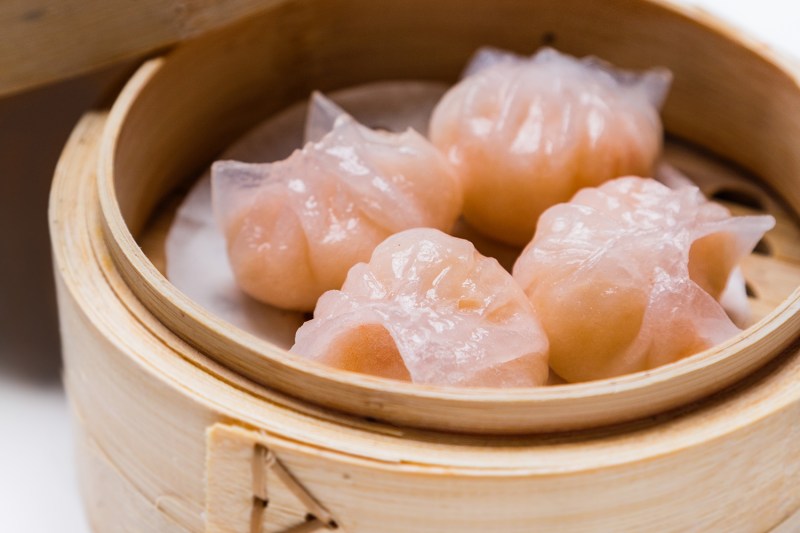If you’ve ever gone out for dim sum, you’ve likely tried an order of har gow. These pillowy, steamed shrimp dumplings feature an intricately folded dough that perfectly blankets the sweet, pink crustaceans on the inside. At first glance, it seems like a super simple dish. But as you discover the history of the dish and the care that goes into making each har gow, you’ll quickly realize that this is a very special Cantonese delicacy. To learn more about har gow, we chatted with Jean-Pierre “J.P.” Choy, the executive chef of Tim Ho Wan inside Palms Casino Resort in Las Vegas.
“The har gow dumpling originated in a teahouse in the Wucu village in Guangzhou,” Choy says. “The creator was said to have had access to a river right outside, where shrimp would be caught and directly made into the fresh stuffing for har gow dumplings.”

Because this shrimp would be made into har gow filling right after it was caught, fresh fish has become a hallmark of the modern iteration of the dumpling. When the shrimp is freshly caught, its natural sweet-salty flavor is preserved. But it’s only going to taste good if the chef prepares it correctly. “The shrimp must not be overcooked in order to retain a slightly crisp texture,” Choy says. “The key to having a successful har gow is making sure that the filling is sealed up well inside of the dough once it is folded.” The filling should also be proportioned so you can eat har gow in one bite.
Although the filling is important when making har gow, the dumpling’s famous folds take true patience and skill to master. Each should traditionally have at least seven pleats, but preferably 10 or more. The more pleats you can make, the more of a master you’re considered to be. The dim sum experts at Tim Ho Wan fold a whopping 13 pleats into each har gow, one of the techniques that has awarded some of the restaurant’s outposts single Michelin stars. “At Tim Ho Wan, the har gow is folded into 13 pleats to create a unique fragile and tender texture,” Choy says. “The pouch is round and preferably [looks] like the stomach of a spider.”
In order to get so many perfect pleats into each har gow, the dough itself needs to be perfect. It’s a simple mix of wheat starch, corn starch, hot water, and cold water, but then it must be rolled to the ideal thinness for it to make a toothsome dumpling. “[Our har gow is] characterized by its ‘snow-white,’ paper-thin, translucent surrounding,” Choy says. “Our chefs hand-roll the dough and flatten it with a special dough knife to create a ‘yin yang,’ paper-thin, round shape (half side thin and half side thick), which results in that ‘fragile and tender’ texture.” The skin must be translucent, yet it should be strong enough not to break when picked up with chopsticks. And it shouldn’t stick to the paper or the other har gow in the bamboo steamer.
While there are few places in the world that make har gow as expertly as Tim Ho Wan, this shrimp dumpling is worth a try at your next dim sum meal. As you’re biting into the delicacy, think about how much care went into creating it, and it’ll likely taste even more delicious.



